Cargo search
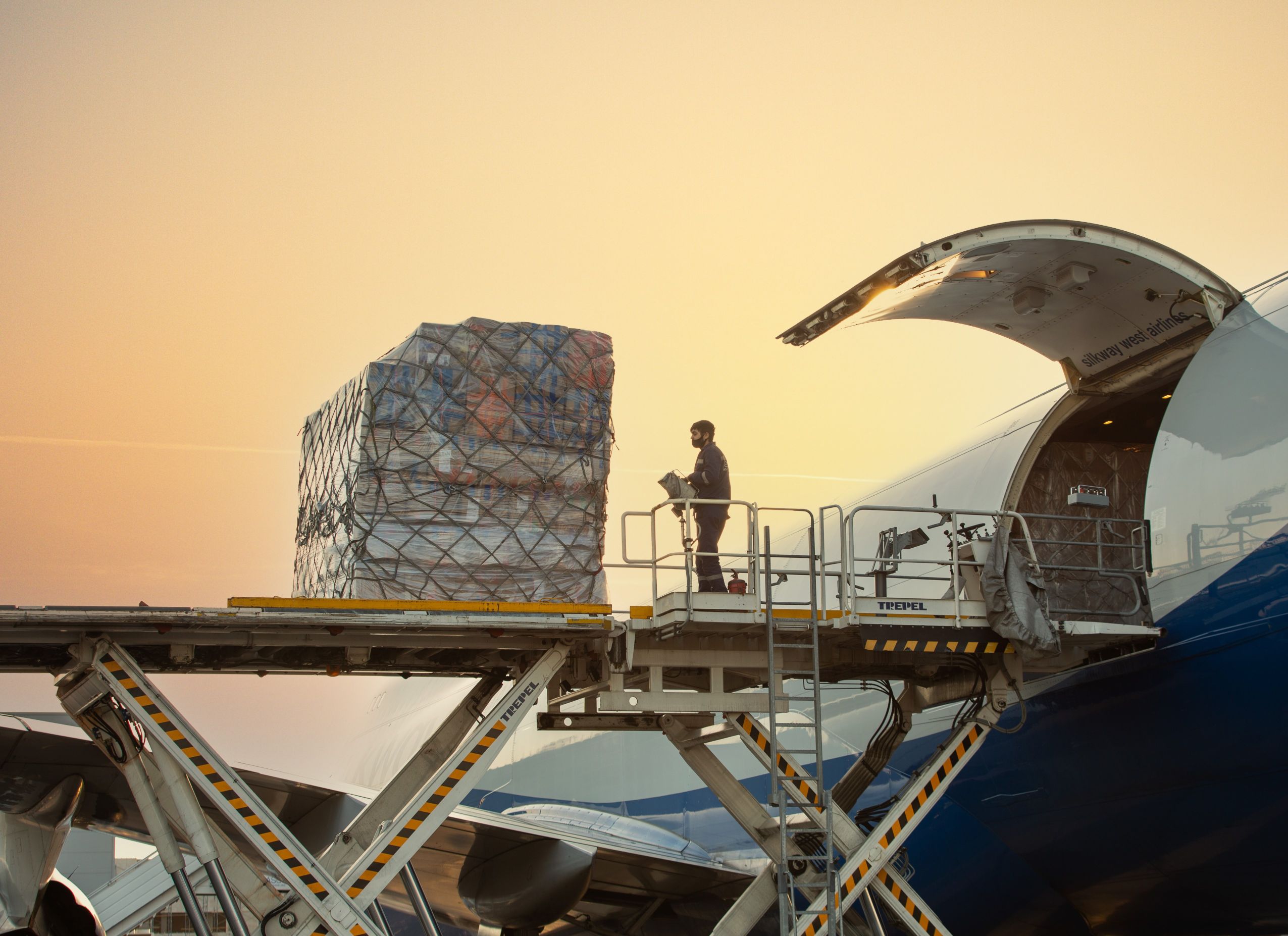
A search for lost cargo or mail is carried out by members of the search team under a written request from customers, an airline or instructions from the authorities. The relevant invoices and positions in the warehouse are checked, explanatory documents are accepted from the warehouses, communication with the shipper's airport is established, etc. If, during the unloading of cargo in the warehouse, a shortage or loss of the cargo is detected, the necessary inspection and subsequent search measures are carried out.
Monitoring and search activities are also carried out when clients apply in cases of claims for delivery, damage or loss of cargo. In cases of carriage of goods without appropriate documents, a specialist of the search group communicates with the carrier of the cargo and the sender's airport or with an intermediate (transit) airport and requests documents for this cargo.
Cargo tracing
A search for lost cargo or mail is carried out by members of the search team under a written request from customers, an airline or instructions from the authorities. The relevant invoices and positions in the warehouse are checked, explanatory documents are accepted from the warehouses, communication with the shipper's airport is established, etc. If, during the unloading of cargo in the warehouse, a shortage or loss of the cargo is detected, the necessary inspection and subsequent search measures are carried out.
Monitoring and search activities are also carried out when clients apply in cases of claims for delivery, damage or loss of cargo. In cases of carriage of goods without appropriate documents, a specialist of the search group communicates with the carrier of the cargo and the sender's airport or with an intermediate (transit) airport and requests documents for this cargo.
AWB tracing
Cargo Terminal
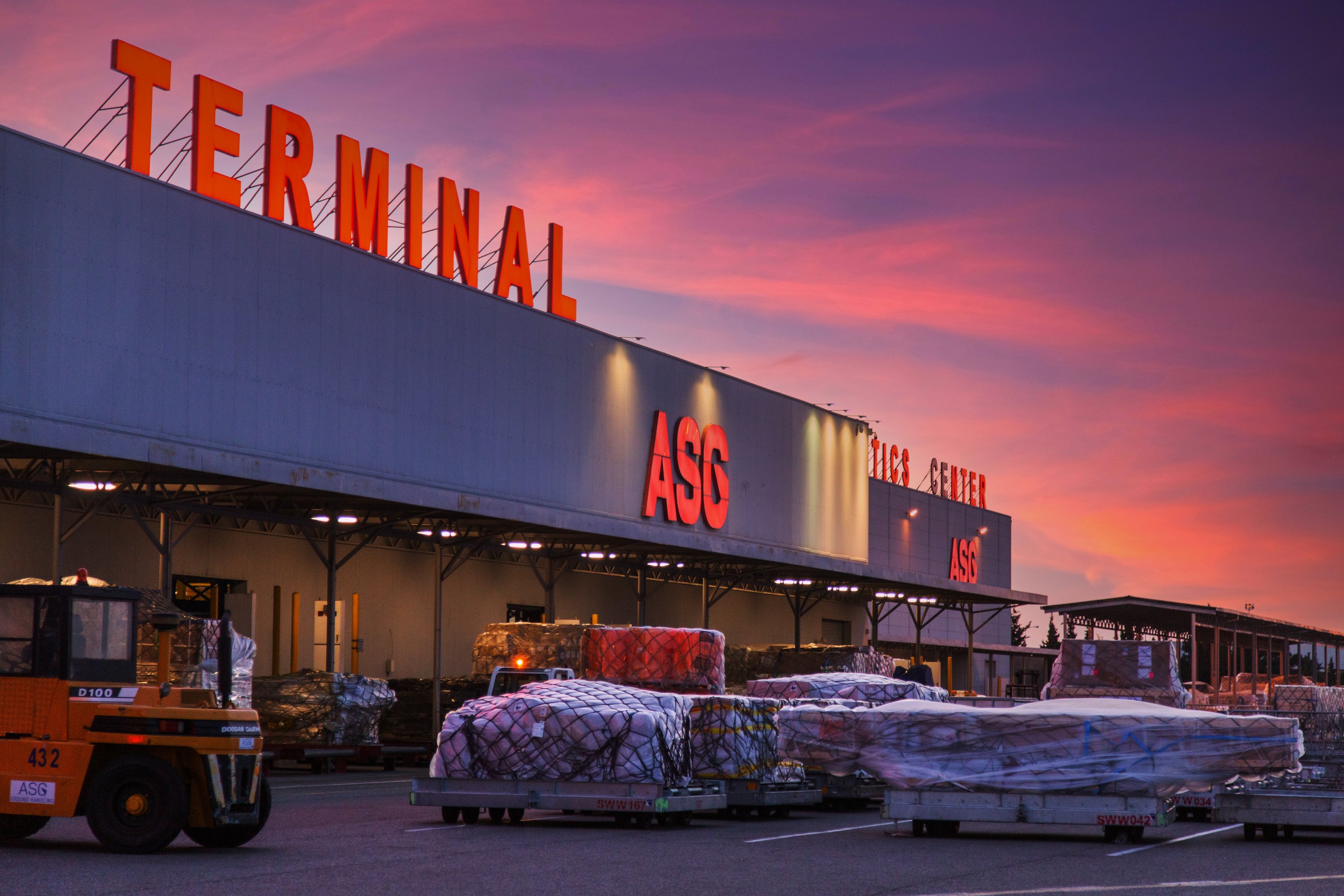
Total area of Baku Cargo Terminal warehouse is 12000 m2. Daily turnover of cargo at the terminal reaches 200 tons. Warehouse equipped with modern facilities for handling of heavy and oversized cargo, perishables, and dangerous goods: coolers and freezers, strong room for valuables, and special facilities for all types of dangerous goods, including explosives and radioactives.
Cold store – temperature +4°C, 2 rooms with area of 21m2 each, height 4000 mm, door 1550x2700 mm.
Freezing room - temperature -18°C, area 45m2, height 4000 mm, door 1550x2700 mm.
Cooling room - temperature -4°C, area 62m2 each, height 4000 mm, door 1550x2700 mm.
Strong room – area 12 m2, height 3200 mm, door 1470x2350 mm.
DGR room – area 8 m2, height 3200 mm, door 1470x2350 mm.
Room for radioactive materials.
Room for human remains.
Automated pallet build, brake and storage system (CDG system) with built-in weighting scales can accommodate 35 10-feet and 34 20-feet pallets. 10 weighing scales from 3 to 20 ton provide flexibility in handling of different sizes freight. Touch screen terminals and hand held wireless equipment ensure proper handling and allocation of cargo.
Our experienced staff has passed relevant trainings and is certified by IATA. DGR staff has the «Acceptance of Dangerous Goods» certificates.
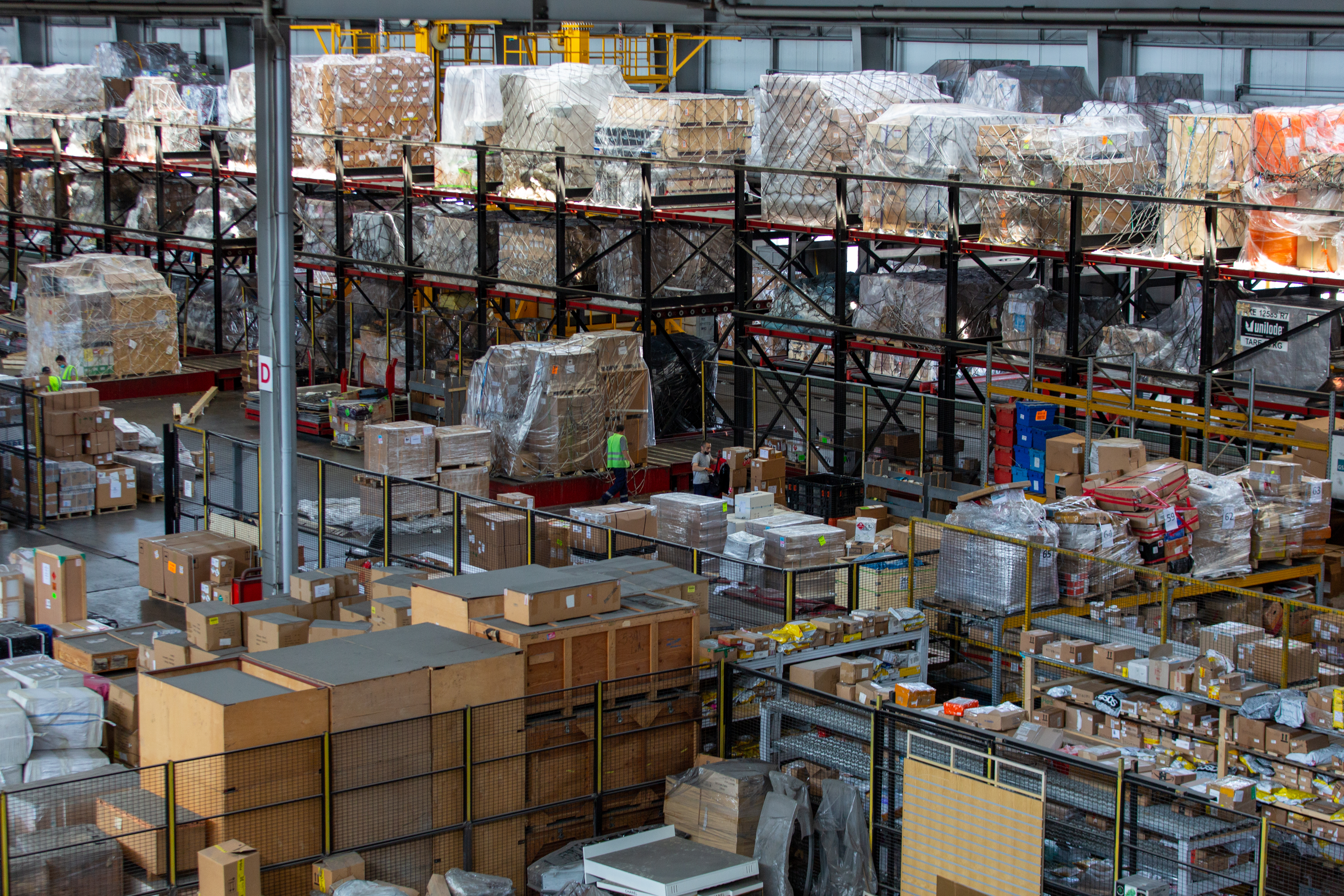
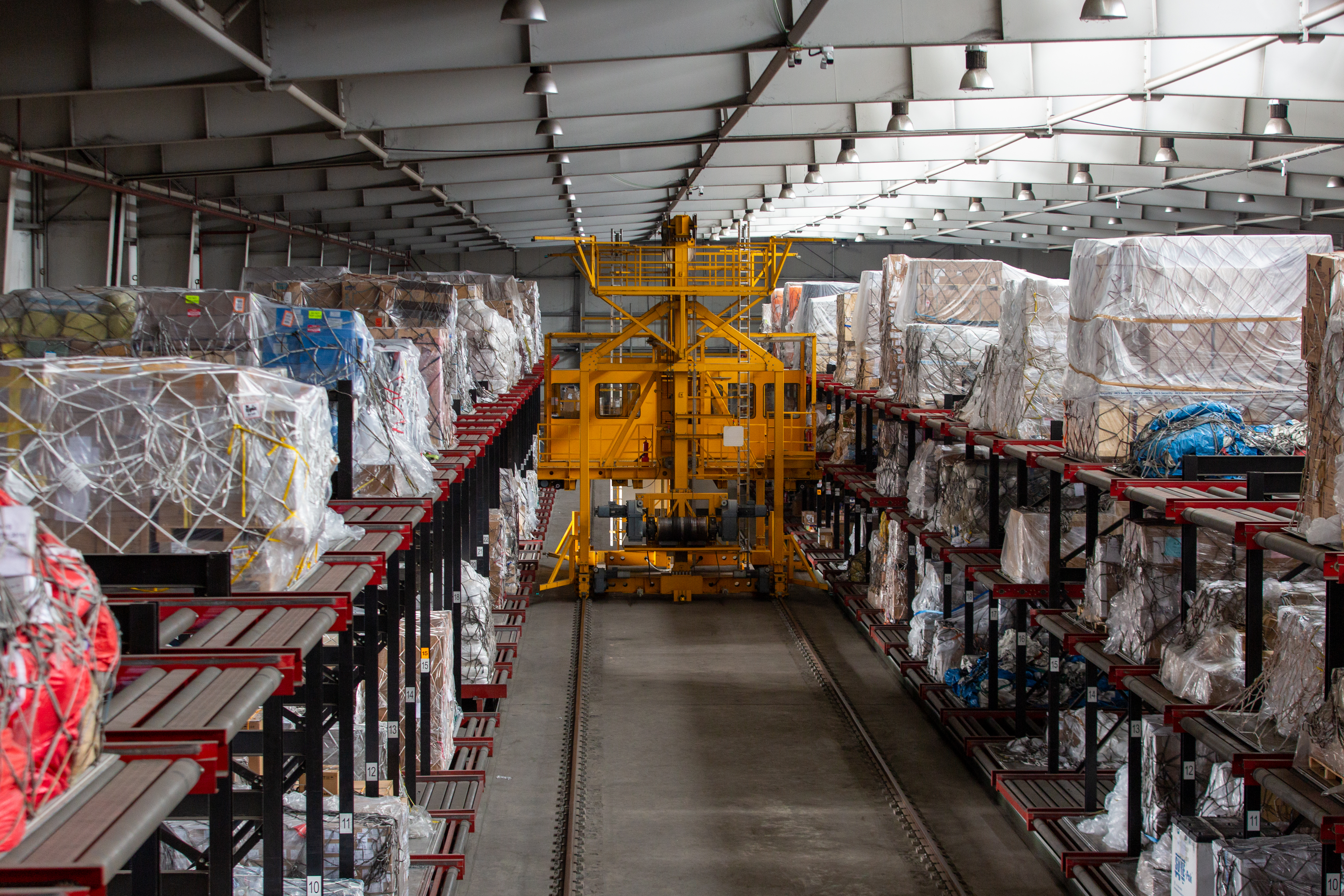
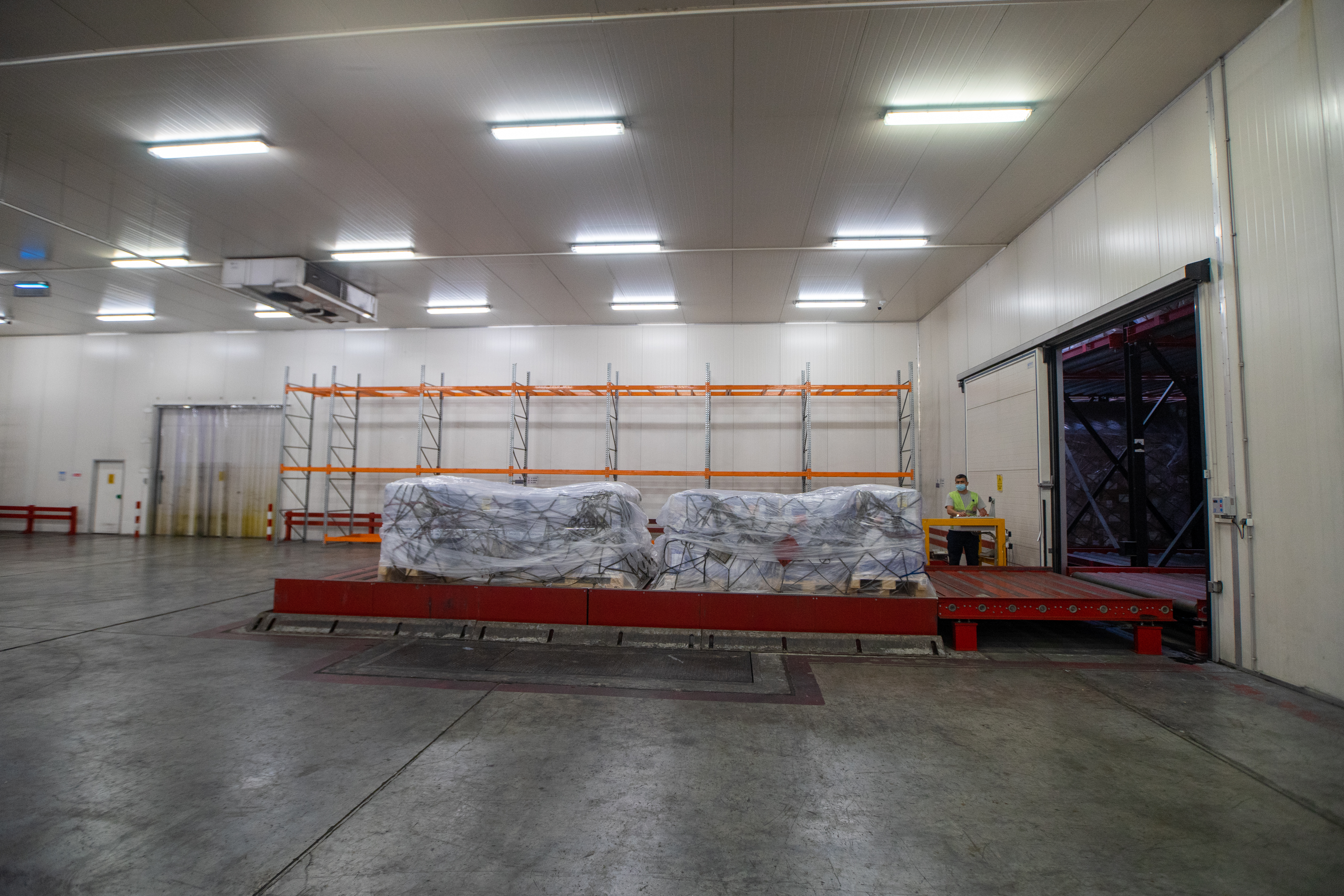
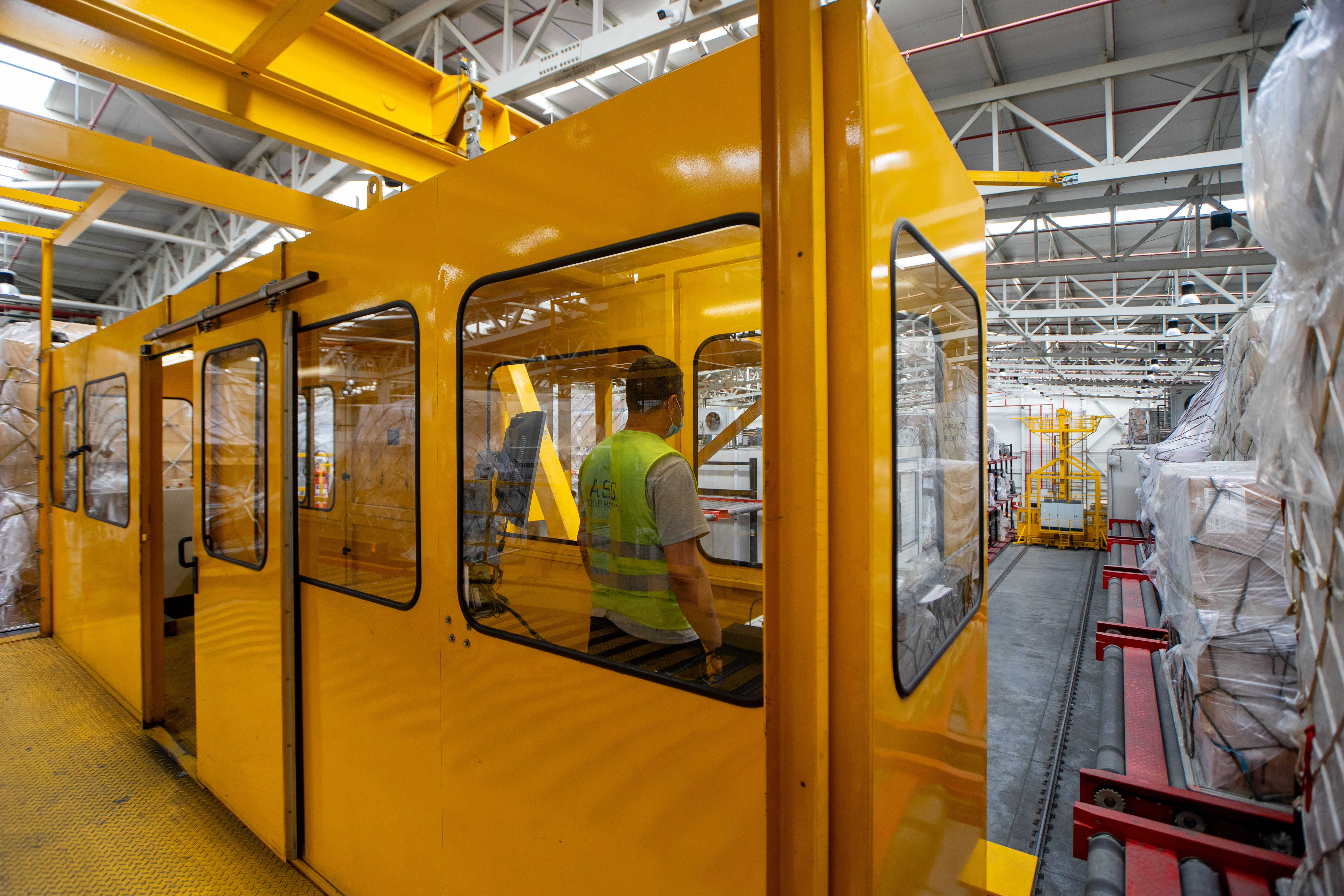
Cargo import
Cargo receipt procedure
1. When the cargo arrives at the Cargo Terminal, our employee will contact you and provide full information on the cargo, including:
- Date of arrival of the cargo;
- Air waybill number;
- Cargo consolidation (whether the whole batch or only part of it arrived);
- Number of packages and weight of a cargo
- Time and days when it is possible to receive the goods
2. You need to come at the Cargo Terminal, go to the information service located on the second floor of the building, present an identity card (or a notarized power of attorney) and advise Air Waybill number to the Officer on duty. Then you will be handed the air waybill and accompanying documents.
3. Next, you need to enter the Terminal building through the entrance "D", and pass through the checkpoint to the warehouse territory. At the entrance you will be given a customer vest. Attention: loss or damage to the vest by the client is subject to a fine
4. Depending on the nature of the cargo, the consignees must complete all the formalities, such as:
- Customs clearance on the second floor of the office space inside the warehouse;
- Sanitary and quarantine control on the third floor of the office inside the warehouse (for products of animal or plant origin).
5. Once you have passed all the necessary formalities and paid customs duties, the necessary stamps will be obtained on your air waybill.
6. Then you need to hand over the customer vest to the employee of the cargo terminal when leaving the warehouse and go up to the 3rd floor and come to the Customer Service Department window.
7. Show the air waybill with the stamps of the customs and (if necessary) the sanitary and quarantine service to the department employee.
8. After checking all the documents, Customer Service representative will present you a printout of the invoice, which you need to pay at the cash desk located on the same floor. Attention! If the cargo belongs to legal entities, companies, organizations, etc., payments for terminal charges are made only by bank transfer.Individuals can pay in cash.
9. Upon completion of payment for services, the consignee is issued a "Cargo Release Ticket", which indicates the terminal gate number and the time of issuing the cargo ticket.
10. After presenting the" Cargo release card " to the storekeeper, the cargo leaving the neutral zone is transferred to the recipient's disposal under the accompaniment of the warehouse employees.
11. If EXTERNAL damage to the cargo or its shortage is detected, the warehouse employee draws up an act of non-compliance, which is signed by both parties. After drawing up the protocol, work is is under way to investigate the incident.
List of required documents for receiving cargo:
For individuals:
- ID card
If the consignee is represented by another individual, then a notarized power of attorney from the consignee is required.
For legal entities:
- ID card
- A power of attorney from the company issued in the name of an individual
For more information, please call: +994 12 437-4757, ext. 7343
Shipper Import
- The cargo storage fee is charged from the moment the cargo arrives at the warehouse.
- Storage of import cargo for the first 48 hours upon arrival is free of charge.
- There is also no storage fee on the first weekend (Saturday and Sunday) and official holidays.
- For more information, please contact our Customer Service Department.
Сargo export
Cargo dispatch procedure
- The shipper approaches the employees of the Customer Service Department on the 3rd floor of the Logistics Center building. Here he declares the intention to send the goods and indicates the destination.
- A staff member of the division issues a non-dimensional consignment note SLI-shipper's letter of instruction to the customer, based on which he delivers the goods to the warehouse. The shipper must specify the following information in the non-dimensional consignment note: name and address of the sender; the name and address of the consignee; the nature of the cargo - (sample)
- At the warehouse, the shipper hands over the goods to the storekeeper, who weighs and measures it, specifies the number of pieces, enters the data into the dimensionless form (SLI) and certifies it with a stamp.
- The shipper returns to the Customer Service Department presents the completed and signed non-dimensional SLI to the employee. Based on this document, our employee fills in and prints out the air waybill for the cargo.
- The shipper uses this air waybill for customs clearance of the cargo.
- After passing the customs clearance, the aviation security service inspects the cargo in the warehouse and stamps in the air waybill.
- The warehouse employee confirms the acceptance of the goods to the warehouse with a stamp in the air waybill.
- The shipper goes back to the Customer Service Department Staff checks the availability of the required stamps in the air waybill and issues an invoice for payment.
- The shipper pays the invoice at the cash desk located on the 3rd floor.
Storage of general cargo in a warehouse for export within 14 days is free of charge. After the 14-day period is expired, the freight stored in the warehouse is charged according to the tariff rates of the Cargo Terminal.
For more information, please contact our Customer Service Department.
Shipper (Export)
Here is a list of necessary documents for your cargo transportation:
- Commercial invoice
- Quality certificate (if products are intended for human consumption)
- Certificate of origin
- Customs declaration
Attention: Information concerning the restrictions in obtaining a permit for the acceptance and carriage of goods to the destination is provided after clarifying more detailed information about the nature of the cargo.
Special permits are required for the dispatch of antiquities and objects of historical or cultural value. For more information, please call: + 994-12-437-47-57
Freight transportation
The construction of the Baku Cargo Terminal on the territory of the Heydar Aliyev International Airport, completed in March 2005, made it possible for Azerbaijan to become a transshipment point for cargo traveling from America and Europe to Asia and vice versa, which is an integral part of the Ipek Yolu ("Silk Road") project. The opening of the terminal makes it possible to significantly increase the volume of international cargo to the republic, automatically turning Baku into an important transit zone of the region. The total area of the First Baku Cargo Terminal (BCT 1) is 12,000 m2. The total area of the platform is 163,000 m2. The platform can accommodate 4 Boeing 747 or AN124 aircraft and 7 IL76 aircraft.
By commissioning the Second Baku Cargo Terminal (BCT 2) in May 2013, the company once again confirmed its commitment to the approved socio-economic development programs, which played an important role in the development of national aviation.
The total area of BCT-2 is 12,800 square meters. There are two conveyor lifts, 6 automatic doors, including a conveyor door for receiving and releasing palletized cargo. The Terminal is equipped with 14 ton and 30 ton weighing scale. It can simultaneously store 2,200 tons or 5,800 cubic meters of palletized cargo. The total cargo turnover of the center is 1200 tons or 7 thousand cubic meters per day, which is 430 thousand tons or 2.5 million cubic meters per year.
The cargo terminal, which has no analogues in the region, allows storing and handling all types of perishable goods requiring a special temperature regime from minus 18 to plus 20 degrees, including products of plant and animal origin, medical preparations.
The technical base of the BCT-1 and BCT-2 terminals provides storage and processing of all kinds of cargoes, considerably raising quality of service for clients, in aggregate with a full set of customs services, in full conformity to the world standards.
BCT-1 and BCT-2 terminals are contain from the various warehouses for handling special types of cargo; refrigerators and freezers for long-term storage of special and perishable products; strong rooms for storing valuable cargo with a video surveillance system, and storage and handling facilities for handling of different categories of dangerous goods.
All cargo movement and its correct placement is logged by specially designed software "ANTWORK", the implementation of which significantly reduces the time of cargo handling. The program was created based on IATA recommendations, which allowed it to be easily integrated into the network of existing systems.
Through the security measures applied in the territory of the Terminals, a high level of security is guaranteed. More than 150 CCTV cameras provide constant monitoring of every entrance and exit in the terminal building, warehouse, parking lot and the platform. Every item brought in and out of the warehouse is subjected to X-ray scanning and radiation testing. The Aviation Security Administration ensures that security procedures are properly followed.
The fact that European airlines and cargo operators prefer transit landings at the Heydar Aliyev International Airport demonstrates not only time and fuel savings, but also high technical capabilities, quality of service, and safety of flights in the airspace of the Republic of Azerbaijan.